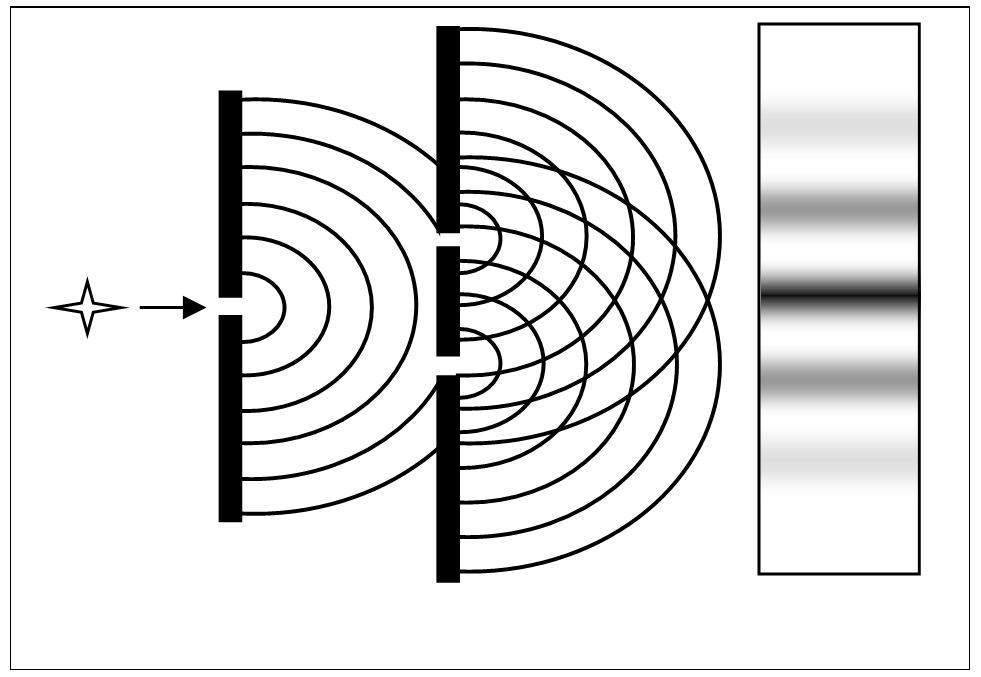
Young’s double-slit experiment is a simple test carried out over two hundred years ago that still baffles physics today. Light shone through two slits gives an interference pattern on a screen (Figure 3.2). Only waves interfere like this, so light must be a wave, but why then do its rays hit at a point? Conversely, if light is made of particles, why do they interfere like a wave?
To explain this puzzle, physicists used lasers to send one photon at a time through the slits. Each photon then gave a dot on the screen, as a particle would, but over time the dots formed the familiar interference pattern, whose most likely impact was behind the barrier between the slits! The effect was independent of time, so one photon shot through the slits each day still gave the same pattern. Since a photon can’t know where the last one hit, how can interference occur?
It seemed that each photon was going through both slits to interfere with itself! In an objective world, we could just observe whether a photon went through both slits, but our world doesn’t work like this. Detectors placed in both slits to see where the photon goes just fired half the time, as expected, so one photon always went by one slit or another, never through both. How then is the interference observed possible?
The puzzle is that when we look at the slits, there is just a photon particle, but when we don’t look, it produces interference. It is as if one skier set off, went around both sides of a tree, but then still reached the finish line as one skier (Figure 3.3).

In summary, the problem is:
1. If a photon is a wave, how can it hit the detector screen at a point not a smear?
2. If a photon is a particle, how can going through one slit give an interference pattern?
And this wave-particle duality doesn’t just apply to light, as electrons, atoms, and even molecules exhibit Young’s two-slit interference (M. Arndt, O. Nairz, J. Voss-Andreae, C. Keller, & Zeilinger, 1999), so they also act like waves.